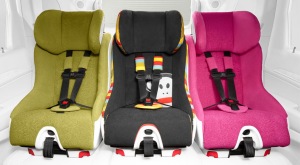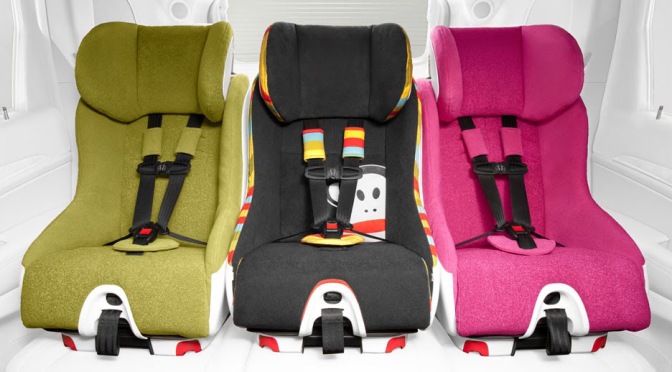
One of the questions I get time and time again involves which seat position is safest for a car seat for young children. It’s common knowledge by now that the back seat is safer than the front seat and that rear-facing is much, much safer than forward-facing, but what about whether to place a seat behind the driver, in the center, or behind the passenger seat? Which is safest? The left, middle, or right? Which of the three Foonfs above should your child sit in, if you get the choice?
Which car seat position is safest–behind the driver, in the center, or behind the passenger?
Instead of answering this question individually, I decided to write it up for everyone. Here is a technical report from the American Academy of Pediatrics that addresses this, published in Pediatrics Vol. 127 No. 4 on April 1, 2011, between pages 1050 and 1066. You can read the whole report; it has lots of interesting information. However, for the purposes of answering this question, this is the relevant part:
Two recent studies specifically evaluated the potential incremental benefits of the center rear seating position compared with the rear outboard positions. Lund79 used data from the National Automotive Sampling System–General Estimates System system from 1992 to 2000 to evaluate the effect of seating position on the risk of injury for children in child restraints. Lund reported that children in the center rear seat had a similar risk of injury to children in the outboard rear seats. In contrast, Kallan et al74 used data from the Partners for Child Passenger Safety project, a large, child-focused crash-surveillance system, from 1998 to 2006 and found that children restrained in forward-facing CSSs and seated in the center rear had an injury risk 43% lower than similarly restrained children in either of the rear outboard positions (adjusted OR: 0.57 [95% CI: 0.38–0.86]). These contrasting findings are likely attributable to how injuries were defined in the 2 studies. Lund defined injury as any police-reported injury, which included those of a relatively minor nature. The threshold for injury was higher in the Kallan et al analysis, which included only injuries involving internal organs and fractures of the extremities.
In other words, one study (Lund’s) did not find a difference in outcomes based on sitting in the center rear vs. outboard positions, while a second study (Kallan et al’s) found a 43% reduced risk of injury when children sat in the center rear compared to the outboard (by the door) positions. The Kallan study was based on forward-facing children, so it’s not clear if the results would be as significant with rear-facing children. However, in the absence of that information, it does seem like the center position is the preferred one. This is underscored by the fact that Kallan’s study only looked at serious injuries, such as those where internal organs were damaged or extremities were fractured, while Lund’s study looked at all kinds of injuries, including minor ones.
To put it another way, if the data from both studies is valid, it suggests that while the overall rates of injury aren’t statistically different based on where car seats are installed in the rear of a vehicle, there is a significant reduction in the rate of serious injuries when children are installed in the center seat, at least when these children are forward-facing.
Does this mean I should never place a child by a door?
Not necessarily. Nor does it mean you should worry if you have to have an outboard installation, especially if you’re installing 3 across seats. What’s most important is to rear-face as long as possible (ideally until 4, 5 or longer), followed by forward-facing for as long as necessary (ideally until at least 5), and then transitioning to a booster (ideally until between 10 and 12). Those are the big areas to cover.
After all of that is covered, if you only have one child to transport, I would put him or her in the middle, and in a good car seat. If you have two or more to transport, I would put the least protected child (e.g., the youngest forward-facing child) in the middle. Keeping basic car safety tenets in mind, I’d also drive as little as possible; it’s very hard to die in a vehicular collision if you aren’t logging thousands of miles on the road each year.
Finally, remember that if you are using a center position, most vehicles and car seats do not allow you to use outboard LATCH attachments from the outboard seats. This means that in most center installations, you will need to use the seat belt. Remember that seat belts are every bit as safe as LATCH. You can go to a free car seat safety check to make sure your seat is properly installed. Your hospital or pediatrician should be able to tell you when and where the next one in your area will take place.
—
If you find the information on car safety, recommended car seats, and car seat reviews on this car seat blog helpful, you can shop through this Amazon link for any purchases, car seat-related or not. Canadians can shop through this link for Canadian purchases.

